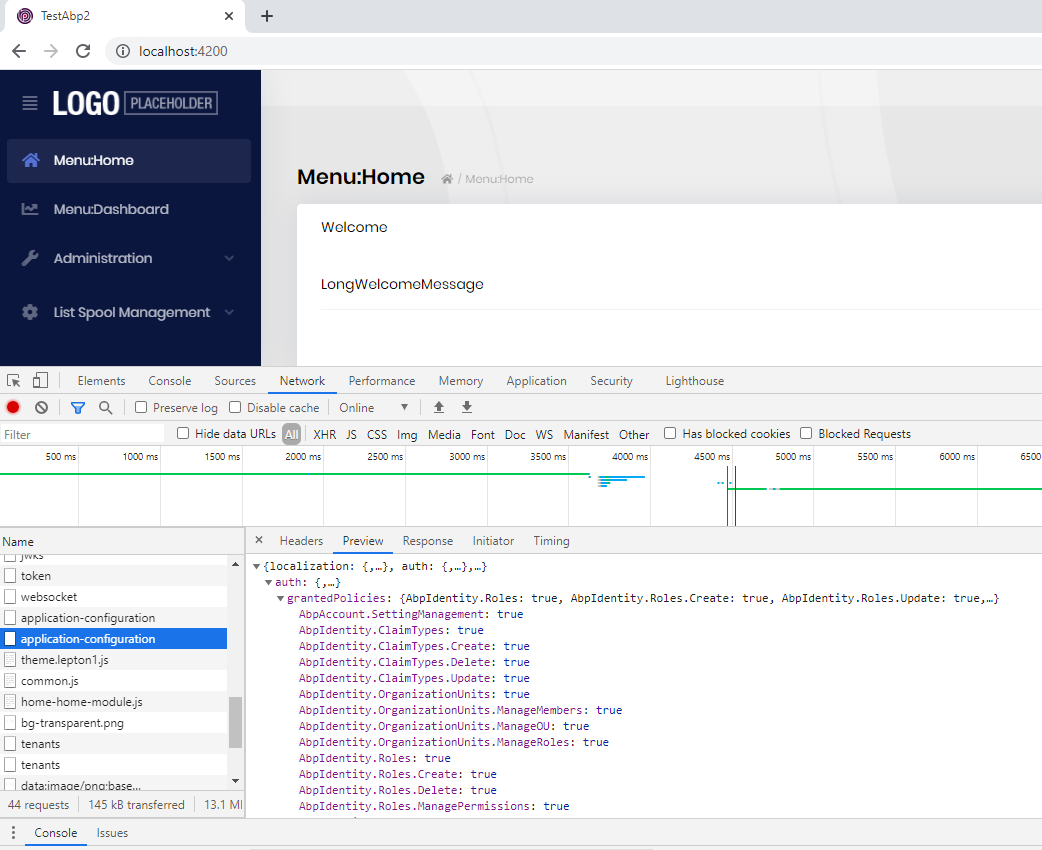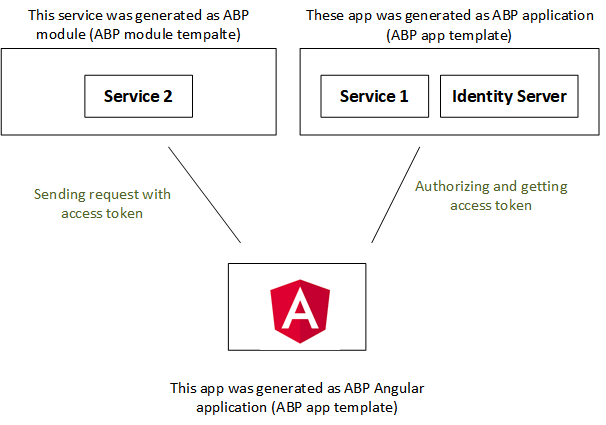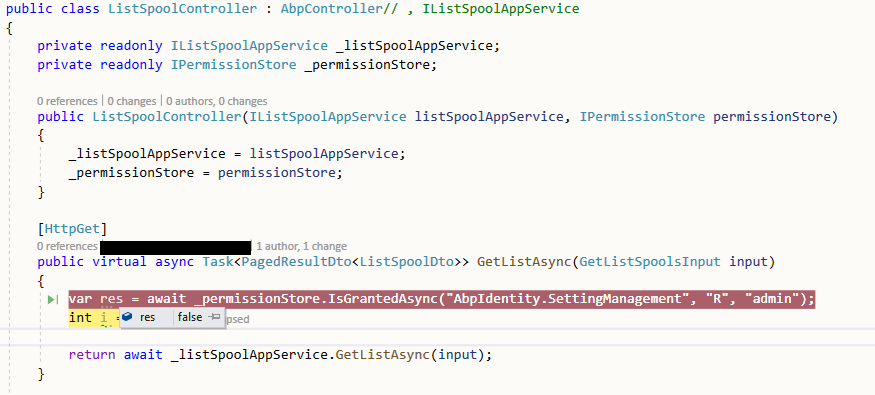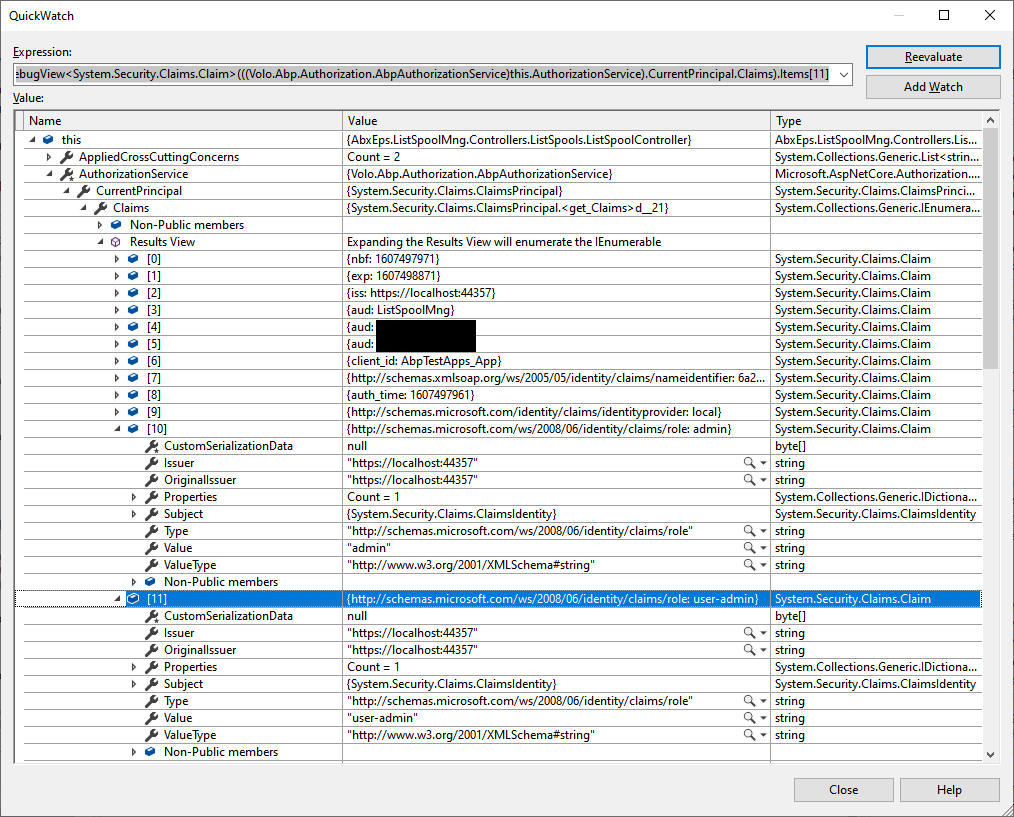Activities of "alexander.nikonov"
You can use middleware, like:
I've already tried to use my code in a middleware - it enters into "if", but in reality cookies not saved. Probably it is because of the mentioned reason, there are limitation, when it is allowed to save cookies to response. Maybe in addition to this approach I need to set up new ClientId / Api Resources (and all that 'rock-n-roll' in IdentityServer admin tab) for Hangfire dashboard?
Hi @maliming.
We found out that our project contains mix of commercial and free libraries. It has been fixed, but issues of using IPermissionStore remained. I've generated ABP module project to reproduce the issue as you had asked me. Don't forget: that project is run separately and connected to IdentityServer which is run separately too and it is not a part of this project. So Abp.PermissionStoreTest.IdentityServer project was unloaded and didn't take part in the testing.
I didn't manage to find source code of Volo.ABP.Authorization NuGet package (version 3.3.2). Could you please tell me where it is located or share one with me via attachment?
Please check your e-mail for the project's source code + screenshots.
Looking forward for your reply.
Is it necessary to store tokens in Local Storage? Or in cookies? Isn't it possible to use headers only?
Hi,
thanks for the recommendation.
I now mixed two approaches: when user tries to access "/hangfire" for the first time - he sends access_token in the url, later on, when Hangfire dashboard tries to load the rest of files, access_token is saved to cookies in the same method (OnMessageReceived) from Referer information and from this moment it is used. This way it works OK for Identity. But I am still not sure it makes sense to combine URL approach with Cookies approach or I'd better use solely Cookies from the very beginning? I made the Cookies http only, i.e. not accessible via js, and ssl.
So if you would suggest to switch to the sole Cookies approach:
- where is the best place to create access_token cookie from the very beginning in ABP solution? How to keep it in-sync with Local Storage (default location)?
- how to clear cookie on back-end side if user makes logout?
- does it make sense to use refresh_token instead to get access_token for working with this dashboard?
I have tried to use the following code finally, but it does not work: the cookie IS NOT STORED, because as I was explained - cookies cannot be saved when doing AJAX requests. So how to save access token to cookie (and keep them in-sync with current user's access token) using backend code?
OnTokenValidated = context =>
{
if (context.SecurityToken is JwtSecurityToken accessToken && !context.HttpContext.Request.Cookies.ContainsKey(accessTokenCookieName))
{
context.HttpContext.Response.Cookies.Append(
accessTokenCookieName,
accessToken.RawData,
new CookieOptions
{
Domain = context.HttpContext.Request.Host.Host,
Path = "/",
HttpOnly = true,
SameSite = SameSiteMode.Strict,
Secure = true,
MaxAge = TimeSpan.FromMinutes(60),
IsEssential = true
});
}
return Task.CompletedTask;
},
OnAuthenticationFailed = context =>
{
context.HttpContext.Response.Cookies.Delete(accessTokenCookieName);
return Task.CompletedTask;
},
OnMessageReceived = context =>
{
if (context.HttpContext.Request.Path.StartsWithSegments("/hangfire"))
{
if (context.Request.Cookies.TryGetValue(accessTokenCookieName, out string accessToken))
{
context.Token = accessToken;
}
}
return Task.CompletedTask;
}
Hi. Thank you - we've estimated the efforts and decided to go on with Vue + Razor pages, as it is supposed to work now in extensions. I've moved Server + Client parts into Nuget packages and now plug-in client part (job manipulation) into our main ABP solution. Important question: are there some difficulties if we want dashboard user to be authenticated in the same way Angular app user is (since dashboard user needs to see only accessible tenants, etc.), i.e. using IdentityServer? Do we need to implement IDashboardAuthorizationFilter? Because by default now we see all jobs being unauthorized. There are several suggestions outthere, we would like to use the simplest for the given case (and if the user is not authenticated - probably we need to redirect him to IdentityServer login form). I've tried the following - but it does not work of course, because obviously when I use location.href from Angular app - whole user information is mising in HttpContext:
public class HangfireAuthorizationFilter : IDashboardAuthorizationFilter
{
public bool Authorize([NotNull] DashboardContext context)
{
return context.GetHttpContext().User.Identity.IsAuthenticated;
}
}
How to pass current authenticated user's information when accessing Hangfire dashboard page from Angular app keeping in mind it's not possible to modify headers when using window.location.href? It's only possible when making HTTP request...
Sorry, but I am still puzzled and missing the idea how to split server and client logic for Dashboard? Hangfire dashboard pages are based on Razor markup and Dashboard is extended using DashboardRoutes.Routes.AddRazorPage. Since the base class - RazorPage - contains some core functionality (like using a key feature, Dashboard context), I'm afraid I will lose it if switching to Angular page.
So, question #1 is: if I make the pages Angular-based instead - how am I supposed to inject them into existing hard-coded Dashboard layout? And question #2 is how am I supposed to interact with server-side extension code? In the given case, server-side part for Hangfire is based on IDashboardDispatcher, which mainly uses Dashboard context and the context is passed through RazorPage class - so all existing logic and even markup is built on server-side...
At the same time, we don't want to create a new Hangfire dashboard - we just want to easily extend its features.
Hi,
under common UI I mean common design for: Identity Server login page, Angular app and now - for dashboard too. And ability to easily change (once we switch to new CSS) this for all these parts of our solution;
as I mentioned, we already have RecurringJobAdmin (it is slightly modified https://github.com/bamotav/Hangfire.RecurringJobAdmin) and it already works (as an ABP module). What we ask here is how to get rid of Vue which is used in the mentioned RecurringJobAdmin Hangfire extension, but retain interaction with server-side (CRUD for recurring jobs, update UI based on next job run time, etc.)? I've read about SPA package for AspNet Core app, but what confuses me is that it supposes running another instance of Node js, which we don't need, because we already have Angular app running. On other hand, I can't seem to see how to use Angular app to interact with Hangfire dashboard,since it looks like Hangfire dashboard is accessible only on server-side (by means of Middleware in AspNet Core app);
I couldn't check permissions in my business logic in "Service 2" (see our current workflow picture attached below). Both services have connection to the same DB. I've attached pictures in my first post, where you can notice that property CurrentUser of AppService object doesn't contains any roles for this user. But If I open AuthorizeService in my controller, access token is parsed and claims with roles are present (see picture in prev post).
Hi,
I'm not using swagger in this case. I built Angular application based on ABP template. This application can authorize user and send request to several services. As you can see below in the picture, access token has been parsed and information about user and their roles is present. What is the reason IPermissionStore may return incorrect result?
You are right. I'm using separate Identity Server. All Identity Server configuring has been done.
I'm using simple Authorize attribute without any permission as extra parameters and I didn't find any mistakes in my log related to Identity Server. Looking forward for your findings.



